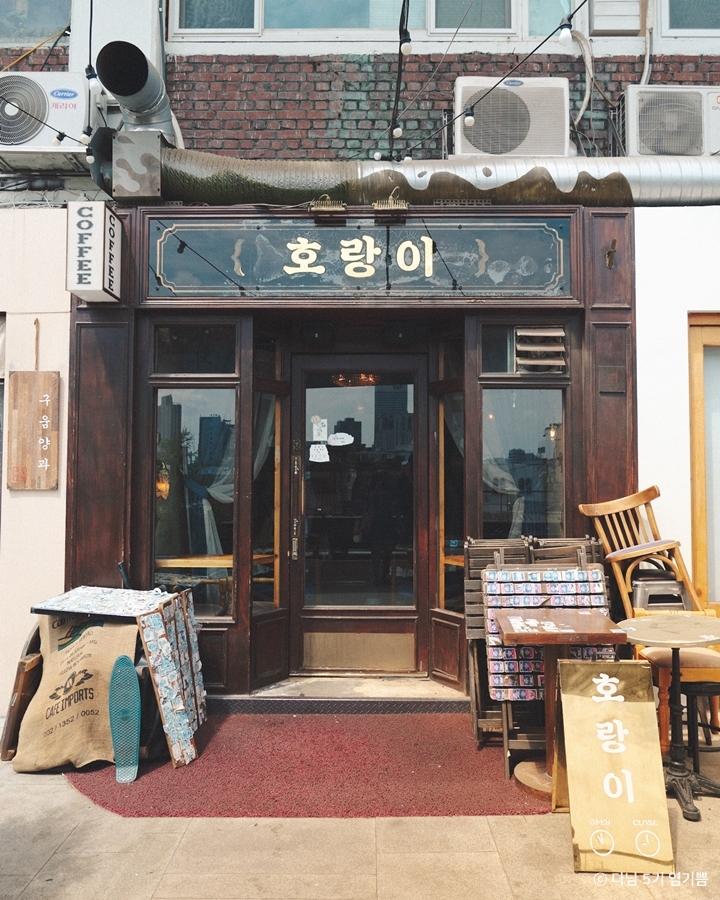Kumkang Land Rover - Jongno Branch [Tax Refund Shop] (CL종로지점(금강 랜드로바))
2.1Km 2024-06-27
81, Jongro, Jongno-gu, Seoul
-
Jogyesa Temple (조계사(서울))
2.1Km 2024-10-25
55 Ujeongguk-ro, Jongno-gu, Seoul
As the main temple as well as the district head temple of the Jogye order in Seoul, Jogyesa Temple is the center of Korean Buddhism. The temple was built in the late 14th century during the Goryeo period but was completely destroyed in a fire. It was rebuilt under the name of Gakwangsa Temple in 1910 with the effort of many respectful monks, namely Han Yong-un and Lee Hee-gwang. The temple was given a role as the head temple of Korea’s Buddhism and renamed to Tegosa Temple in 1936. In 1954, a purification drive took place to eliminate Japanese influence and revive traditional Buddhism, which established the present day Jogyesa Temple as a result.
Jogyesa Temple plays an important role in Korean Buddhism as the head temple of the Jogye order. Jogyesa Temple’s Dharma Hall serves as the main venue for several Buddhist events, holding rituals, lectures, ceremonies, and other events all year long. The annual lantern festival in celebration of Buddha's birthday also takes place at this temple.
Saemaeul Sikdang Dongdaemun (새마을식당 동대문)
2.2Km 2024-03-11
1FL, 30, Eulji-ro 43-gil, Jung-gu, Seoul
+82-2-2274-0410
Located near Dongdaemun and Dongdaemun Design Plaza (DDP), Saemaeul Sikdang specializes in traditional Korean grilled pork, including bulgogi, moksal (grilled pork shoulder), and grilled intestine. Especially for lunch, patrons have the option to delectable baekban (hand-made set menu), which is a traditional home-made Korean meal with steamed rice and grilled pork for side dish.
Dokkaebi Bulgogi (도깨비불고기)
2.2Km 2024-03-12
38 Eulji-ro 43-gil, Jung-gu, Seoul
+82-2-2269-1538
Dokkaebi Bulgogi is a Korean restaurant located near Dongdaemun Design Plaza (DDP), Cheonggyecheon Stream, and Dongdaemun Gate. Its main menu features Korean-style barbecue made with beef and pork. In addition to dishes like galbi jjim (braised galbi) and pajeon (green onion pancake), they also offer simpler options such as galbitang (galbi soup), jjigae (stew), and naengmyeon (cold buckwheat noodles).
Sunmine Haengbok Gejang Dongdaemun (순미네행복게장 동대문)
2.2Km 2024-03-12
3FL, 38, Eulji-ro, 43-gil, Jung-gu, Seoul
+82-2-2268-2059
Sunmine Haengbok Gejang is exclusively dedicated to Korean-style kkotgejang (soy sauce marinated blue crab) and shrimp dishes. Gejang is a Korean favorite dish made by marinating blue crabs in soy sauce and other seasonings. The restaurant offers also saeu jang (soy sauce marinated shrimp) and fried shrimp. In addition, one can exlpore Dongdaemun and Dongdaemun Design Plaza (DDP) nearby, enriching the cultural experience.
Horangii (호랑이)
2.2Km 2023-12-22
157 Eulji-ro, Jung-gu, Seoul
Horangii Coffee, located in Euljiro, Seoul, boasts a retro yet hip atmosphere. Furniture and picture frames with traces of time gone by and impressive props with the concept of a tiger come together to create a distinct atmosphere unique to this place. There are tables both inside and outside the cafe, but due to its small size, it is always crowded with customers. The signature menu items here are Horangii Latte and Fruit Sando. Horangii Latte has an impressive savory yet sweet flavor. Fruit Sando, made with whole fresh seasonal fruits, combines with soft whipped cream for a unique taste.
Nolboo Bossam & Budaejjigae Euljiro6ga(놀부보쌈&부대찌개 을지로6가)
2.2Km 2024-10-15
2F, 34, Euljiro43-gil, Jung-gu, Seoul
+82-2-2264-1669
This is a Korean cuisine located in Dongdaemun Gate, Seoul. One of Korea’s representative restaurant franchises. The best menu at this restaurant is napa wraps with pork.
Samgyeopsal Jeonmunjeom Daetongnyeong (삼겹살전문점대통령)
2.2Km 2024-03-11
249-24, Jangchungdan-ro, Jung-gu, Seoul
+82-2-2277-2276
This restaurant offers grilled pork that has been aged in bamboo tubes, a process that tenderizes the meat and removes any gamey odor from the Samgyeopsal (Grilled pork belly). The meat is served with kimchi, vegetable wraps, and side dishes. Kkotgedoenjangjjigae (Blue crab soybean paste jjigae) and Naengmyeon (Cold buckwheat noodles) also pair well with the pork. This establishment is an excellent choice for enjoying Samgyeopsal (Grilled pork belly) at affordable prices.
Palace Royal Guard Changing Ceremony (수문장 교대의식)
2.2Km 2025-07-11
161 Sajik-ro, Jongno-gu, Seoul
+82-2-3210-1645
In the Joseon dynasty, the royal guards of the palace were gatekeepers who were responsible for guarding the the main gates of Gyeongbokgung Palace as well as the main gates of the city such as Heunginjimun Gate and Sungnyemun Gate. The royal guards worked in shift duties and were in charge of opening and closing Gwanghwamun Gate. Before the royal guard system was enforced in 1469, the palace gates were protected by soldiers of the central army. The Palace Royal Guard Changing Ceremony held at Gyeongbokgung Palace and the Gwanghwamun area reenacts the guard-changing procedure that took place during the Joseon dynasty, along with the reproduction of costumes and weapons, based on historical records.

![Kumkang Land Rover - Jongno Branch [Tax Refund Shop] (CL종로지점(금강 랜드로바))](http://tong.visitkorea.or.kr/cms/resource/95/3313995_image2_1.jpg)



 English
English
 한국어
한국어 日本語
日本語 中文(简体)
中文(简体) Deutsch
Deutsch Français
Français Español
Español Русский
Русский